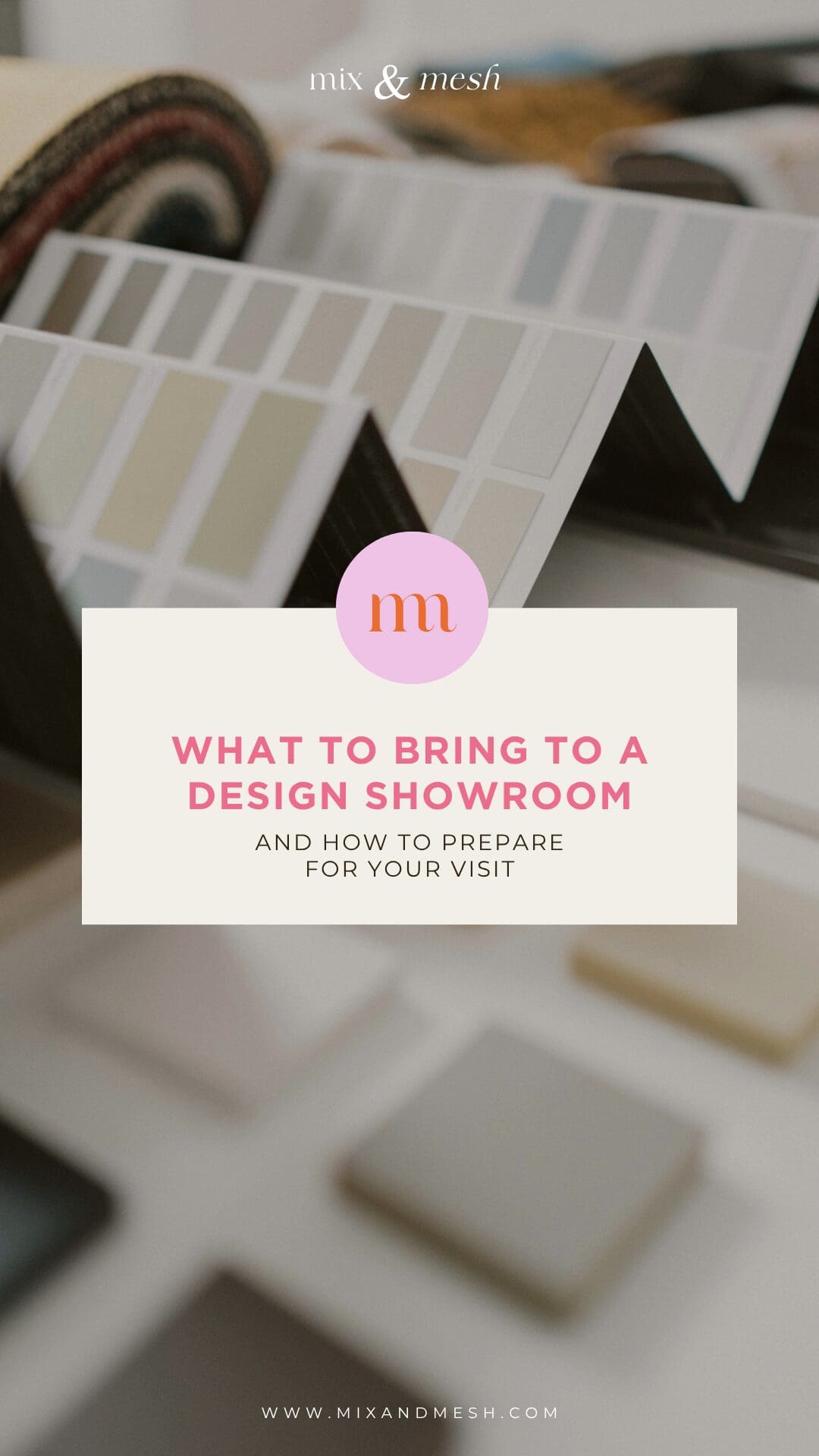You’ve done your homework. You’ve made your lists. Now it’s time to step into the showroom.
And suddenly… it’s a little overwhelming.
So many finishes. So many samples. So many decisions.
But here’s the thing: when you walk in prepared — knowing what you’re looking for, what questions to ask, and how to steer the conversation — a showroom visit doesn’t have to feel like a pressure cooker. It can actually be fun.
In this post, I’ll walk you through exactly how to prepare so you get the most out of your time in the showroom and leave feeling empowered — not exhausted.
This post is part of the 7-Day Finish Confidence Challenge, a series to help homeowners make clear, confident design decisions during their build or remodel. You can follow the challenge step-by-step, or just start here if this is where you need help.
Step 1: Bring the Essentials
Walking into a showroom without context is like shopping for clothes without knowing your size. The more you bring with you, the easier (and faster) the process will be.
Here’s what I recommend gathering:
- Your selection list – The room-by-room list you created earlier (Day 01), showing what still needs to be chosen
- Budget info – Know your price range for things like flooring, tile, plumbing fixtures, etc. It helps keep recommendations realistic
- Timeline awareness – Be prepared to discuss when you’ll need each item delivered. Vendors can’t always stock last-minute selections
- Drawings or floor plans – Even basic floor plans or elevations help showroom reps understand what you’re working with
- Inspiration images – Bring screenshots or Pinterest images that show the style or mood you’re going for
Pro tip: Call ahead to make an appointment if possible. Many showrooms work by appointment and you’ll get better guidance when a rep is expecting you.
Step 2: Prioritize What You Look At First
If you’re visiting multiple showrooms, or you only have an hour to spend, you want to make the most of that time.
Here’s a general order of operations I often use with clients:
- Start with flooring or tile – Design usually starts from the ground up. Once you’ve made a call on flooring or key tile elements, everything else builds around that.
- Then cabinetry + countertops – These are high-impact and often anchor the rest of the material palette.
- Then plumbing + lighting – These layer in functionality and detail.
- Then finishes like hardware, paint, or trim – These are easier to decide once the major materials are set.
Pro tip: Prioritize materials with longer lead times first. If something is going to take 10+ weeks to arrive, it’s better to knock that out early.
Step 3: Lead the Conversation — Don’t Get Led
You don’t need to be an expert, but you do want to steer the conversation. Start by sharing your needs clearly with the showroom rep:
- “I’m selecting tile for a main bathroom that sees a lot of traffic — and I need something durable and easy to clean.”
- “I’ve got a $6/sq ft flooring budget and a 6-week lead time. What do you have that fits both?”
- “I’m building a modern home with warm undertones — I’d love help narrowing down cabinet finishes that won’t clash.”
Give them context, and they’ll be able to guide you to the best-fit options.
Pro tip: Don’t feel pressured to decide everything on the spot. Take photos, jot down notes, and ask to check out samples when possible.
Step 4: Ask Better Questions
The showroom team is there to help — but their guidance is only as good as the questions you ask. These are some of the most helpful ones I’ve seen clients use:
- Durability & maintenance: “How does this material hold up over time?” “What kind of cleaning does it need?”
- Lead time: “Is this in stock or special order? How long does it typically take to arrive?”
- Installation details: “Does this material need a specialty installer or any prep work I should know about?”
- Alternatives: “Do you have anything similar with a shorter lead time or better price point?”
Pro tip: Lighting always looks different in the showroom. Step outside or near a window with your samples to see how they behave in natural light.
Why This Step Matters
A good showroom visit doesn’t just help you make selections — it helps you feel the finishes, compare options side by side, and walk away with clarity you can’t always get from a screen.
Being prepared helps protect your budget, your timeline, and your energy. And when you come in with a plan, it’s so much easier to avoid decision fatigue and impulse picks.
You’re not there to browse — you’re there to choose with confidence.
Ready for What’s Next?
👉 Day 07: How to Coordinate Your Home Finishes for a Cohesive, Confident Design
Need help reviewing samples or coordinating selections across rooms? You can book a 1:1 design consult or use DesignDirect to message me with questions as they come up in real time.
